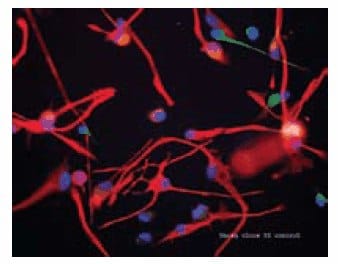Fibroblast Growth Factor Family (FGF)
Fibroblast Growth Factors (FGFs) are potent regulators of cell proliferation and differentiation. They are critically important in normal development, tissue maintenance, wound repair, and angiogenesis in somatic stem cells. Mutations in FGF genes are associated with various diseases such as cancer, cardiovascular disease, osteoarthritis, diabetes, Parkinson’s disease and hypophosphatemia2.
Human FGF family contain 22 members, designated FGF-1 through FGF-23 (except FGF-15). All FGFs except four members (FGF11, FGF12, FGF13 and FGF14) bind to four transmembrane tyrosine kinase receptors – FGFR1, FGFR2, FGFR3, and FGFR4.

Figure 1.Members of FGF family control development and tissue repair
Acidic FGF (aFGF) and basic FGF (bFGF) are the prototypic FGF members named because of their different isoelectric points5. Acidic FGF has high expression levels in brain, retina, bone matrix and osteosarcomas. Basic FGF is found in a variety of tissues, including pituitary gland, neural tissue, adrenal cortex, corpus luteum, and placenta.
Acidic and basic FGFs stimulate proliferation of cells of mesodermal origin, and many cells of neuroectodermal, ectodermal, and endodermal origin. These two FGFs along with other members in FGF family play significant roles in modulating cell proliferation, migration, differentiation and angiogenesis2 (Table 2).

Figure 2.Immortalized cortical cell line in the presence of growth factors
Immortalized cortical cell line in the presence of growth factors bFGF (Cat. No. F0291) and EGF (Cat. No. E9644). Cultures are predominantly GFAP staining astrocytes (red) with a few β III-tubulin staining neurons (green). Counterstaining of cell nuclei with Hoechst dye. Images of human neural stem cells courtesy of ReNeuron Limited, United Kingdom.
Um weiterzulesen, melden Sie sich bitte an oder erstellen ein Konto.
Sie haben kein Konto?